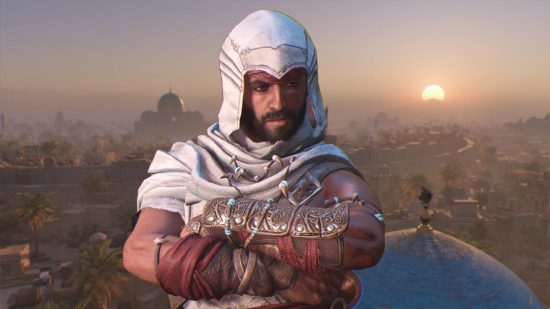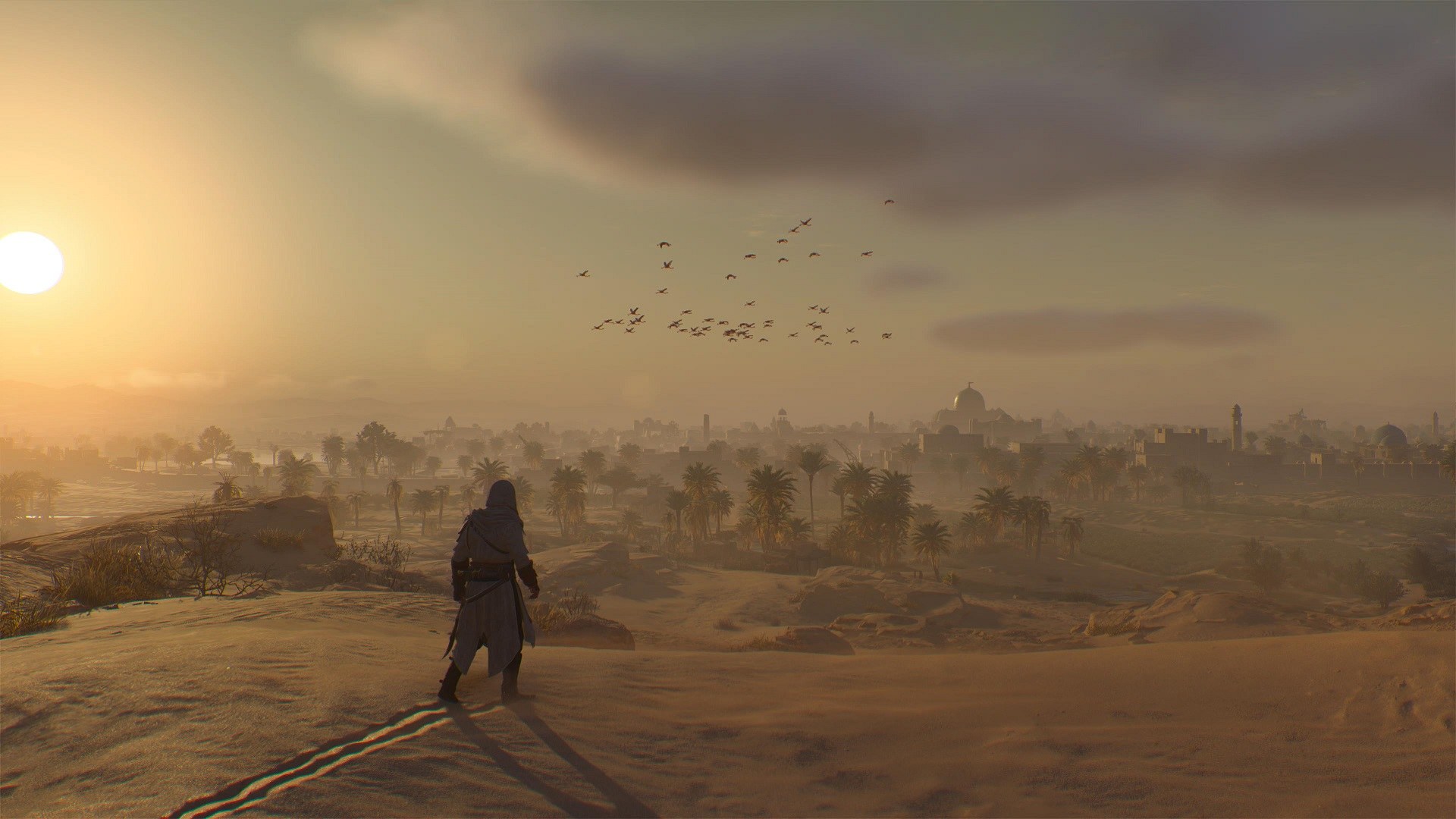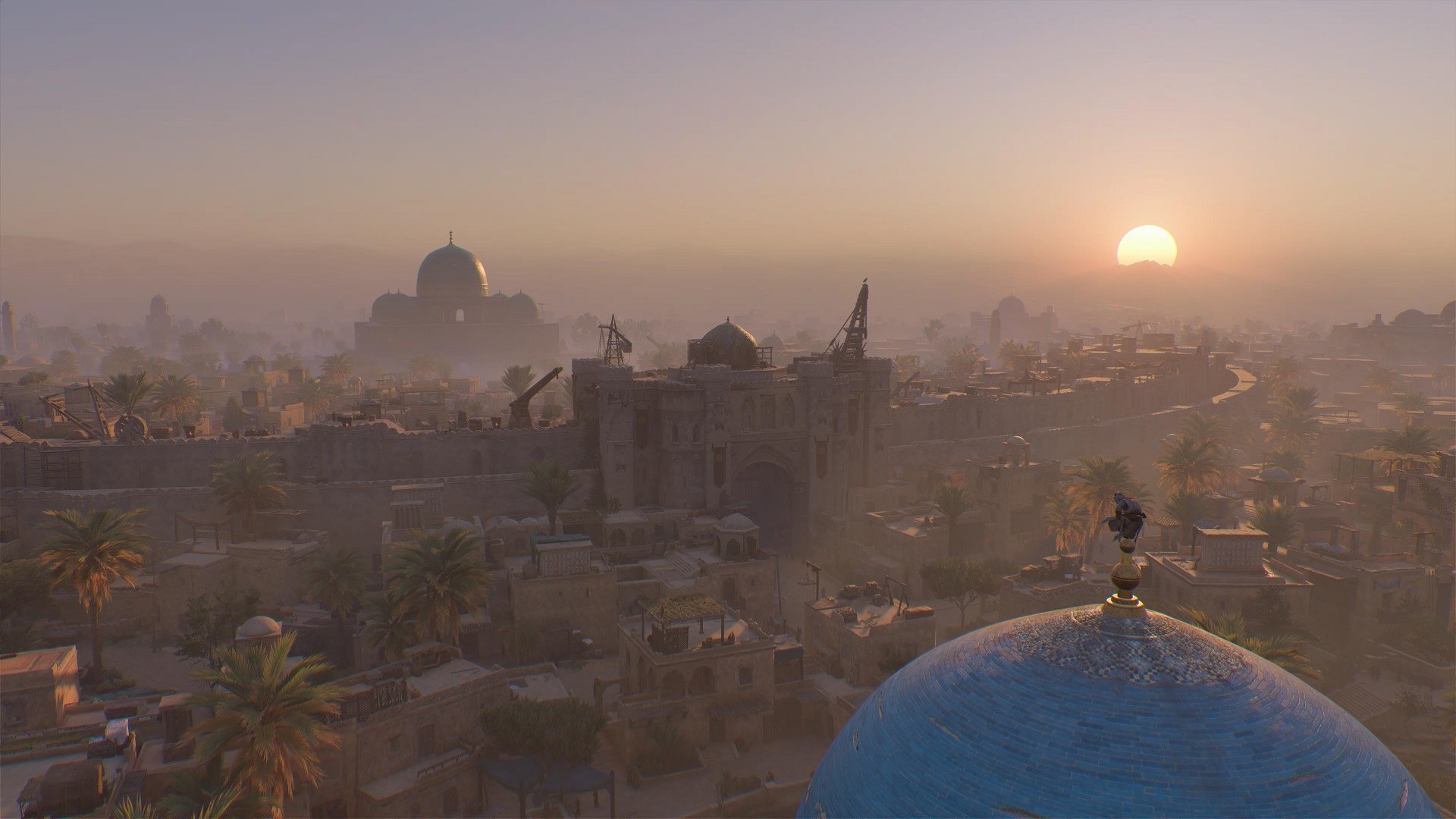The ninth-century Baghdad of Assassin’s Creed Mirage isn’t very big, at least in relative terms. As the follow-up to a trio of recent entries that saw the series expand its settings from individual historical cities to huge swathes of entire countries, Mirage is notable in large part for its restraint.
2017’s Origins let players traipse around a sprawling version of late-Ptolemaic Egypt, 2018’s Odyssey recreated the islands and cities of fifth-century B.C. Greece, and 2020’s Valhalla took place across a condensed map of the English kingdoms during the ninth-century invasion of the Great Heathen Army. Assassin’s Creed Mirage, on the other hand, is confined almost entirely to a single, well-defined urban center and its surroundings.
While this humbler focus may make it seem like Mirage would be less able to communicate a sense of high adventure, concentrating on a single region and a smaller cast of characters allows the game to capture a spirit of excitement far better than its bulkier, region-trotting predecessors.
This is partially due to protagonist Basim Ibn Ishaq – a character who appeared in Valhalla before being given his own origin story here. Basim’s story begins with him as a young street thief, a scrappy idealist who wishes for a better world and possesses no serious prospects for accomplishing this other than his knowledge of the game’s proto-Assassins (the Hidden Ones) and, of course, his preternatural parkour talents.
As Basim learns the Hidden Ones’ murderous trade, players learn the geography of his city in tandem. He progresses through the organization’s ranks, uncovering a conspiracy at the heart of the ruling Abbasid Caliphate, while the audience grows familiar with the rivers and outlying deserts, grand mosques, and bustling souk of the Baghdad he explores. Basim’s character arc neatly couples his rise from a plucky, naive young man to a self-assured and mature actor in the highest echelons of Abbasid politics with the player’s growing understanding of the geography of Mirage’s setting.
In contrast, Valhalla’s ninth-century English kingdoms required plenty of travel between large cities and scattered towns, and the variety of side activities packed into its setting worked alongside its lengthy main plot to expand its runtime into the 70 or 80-hour range. Like Odyssey and Origins before it, Valhalla was also an experiment in redesigning Assassin’s Creed – previously a series set in much smaller locations – into a behemoth RPG in the style of, say, The Witcher 3.
By surfacing design elements like item statistics and experience points, these entries also displayed an artificiality that reminded players constantly that they were exploring digital landscapes that functioned more as game maps, dotted with stat-boosting activities to complete, than recreations of historical settings worth exploring for their own sake. Sprinting or fast-traveling back and forth between early medieval Winchester and York to complete side missions or hunt for gear gave the impression that Valhalla’s cities were disposable – places, like corner stores, to swing by for a quick errand rather than locations to inhabit.
Basim spends almost all of his time in Baghdad, however, growing from a hardscrabble youth to a hidden power player in city politics. Because the player guides him through this process, his detailed knowledge of the city becomes their own. We form a mental map of architectural and geographic landmarks, memorizing the market stalls that sell assassination tools and the armed city walls that block easy access while fleeing guards across rooftops. Even though it’s a much shorter game than the time-eating Valhalla or Odyssey, it imparts a stronger sense of place than those larger series entries.
Mirage’s more intimate setting also carries with it a sense of adventure that stems from our understanding of Basim’s environment. The danger of him failing in his mission to uncover a local conspiracy is the danger of him losing those he cares about in his home – and seeing his city fall prey to his enemies’ plotting. The more confined setting of Mirage works, then, on multiple levels: the audience’s growing familiarity with it mirrors Basim’s coming-of-age journey and our time spent learning its geography and population makes us care for its well-being.
The trade-off to this smaller focus is a diminished concentration on the grand political intrigue that made entries like Origins or Assassin’s Creed 2 and 3 memorable. Mirage, which is set during the initial chaos of the Anarchy at Samarra, has plenty of rich material it fails to adequately draw from. In its goal to tell a more personal story, though, Mirage succeeds. Its creators understand how to best design a game world to fit the narrative it wishes to explore and, in the process, show that bigger isn’t uniformly better in games.
For further thoughts on Ubisoft’s latest, give our full Assassin’s Creed Mirage review a read. We can also help you with the AC Mirage enigma puzzles and serve up a list of all the AC Mirage outfits at launch.




